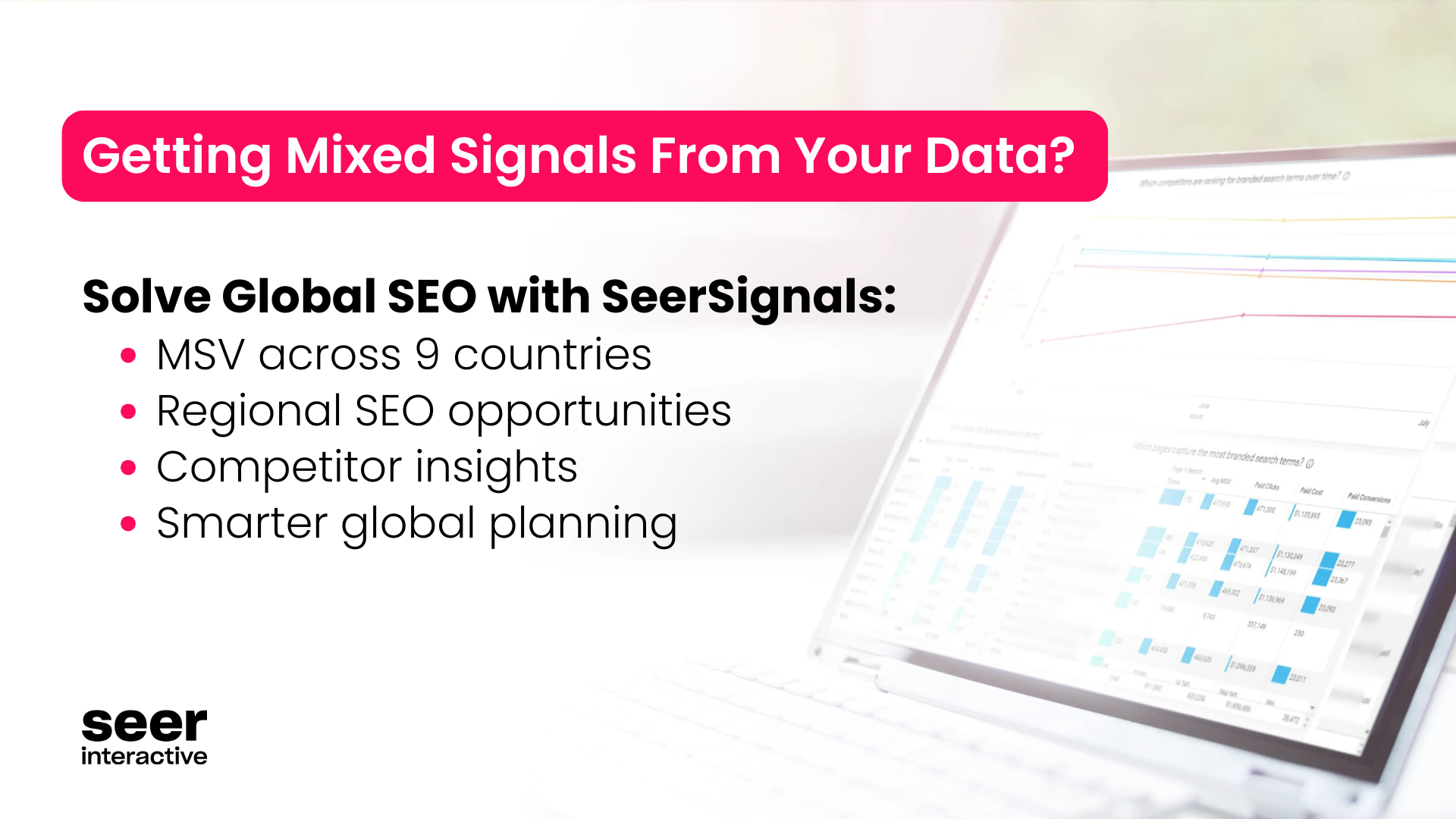A website without great navigation can be like the clearance rack at Urban Outfitters. It is full of hidden gems, but sizes and types of apparel are all mixed up. You’re often left wondering if the effort of sorting through the options is even worth scoring that great deal.
Navigation is crucial for both users and search engines to effectively use your website. For most sites, navigation is ever-evolving as new content is added and business priorities shift. Changes can be costly and can have a trickle-down effect, making touching the navigation a nightmare for marketers who have multiple internal teams to please.
At Seer we do our best to do right by the user first, and search engines second. Approaching your navigation should be no different. In this post, you’ll learn how to get the answers from your users as well as how to:
- Confirm if you should update your navigation
- Back up this confirmation with data
- Form a low-risk plan-of-attack for SEO
- Visualize proposed changes to get buy-in
- Measure your efforts
- Monitor, tweak and refine your navigation over time
Step 1: Are there issues with your navigation?
Audience interviews and moderated user testing can provide valuable insights when figuring out where to start, or if you should even touch your navigation at all.
If you’re not sold on audience research, check out this direct quote from a real user. It didn’t feel great to hear, but it sure helped us identify that there was a problem:
“I did find that I would click buttons and end up in some place that I'd been before, or I'd go down one rabbit hole and end up in another rabbit hole, and there were just a lot of places to go.”
Your goals in this step should depend on the greater goals for your website. For example, if your goal is to increase conversions, the goal of audience research should be to:
- Learn if there are areas of your site where conversions can happen that users can’t find
- Learn if users struggle to navigate through your conversion funnel after landing
Here are some example questions to ask the audience that might lead you toward these insights:
| Question so ask the audience | Insight gained |
| “What, if anything, almost kept you from [filling out a form, buying an item, etc.]?” | Identifying friction points is the first step in figuring out if there’s an issue. |
| “How did you make comparisons between two solutions that fit your needs? Was anything unclear?” | Perhaps you do clarify this on your site, but users aren’t able to find it. Your next step should be making this information front-and-center, whether that means through strategic internal linking or making it a part of your navigation. |
| “Knowing what you know now (after going through the search process), what information do you wish you had at the time of your search?” | If you already have this content, great! Now you know you need to make it more accessible. If you don’t already have this content, also great! Now you know what content you need to create. |
Audience interviews can also help you determine if there’s a disconnect between the terminology users use and the words you use on your website. For example, if you offer an addiction studies program, but your audience refers to it as “substance abuse counselor program”, they might not inherently know how to navigate your website, and might turn to a competitor who is calling it what they do.
Step 2: Confirm audience insights using data
If you’ve ever done qualitative research, you probably know it can be hard to get internal buy-in from “just talking to people.” Using tools like HotJar, CrazyEgg and other heatmapping softwares can give you some quantitative data to supplement your audience research findings.
You can set up heatmaps and recordings to see which parts of the navigation are getting the most interaction. Or, take it a step further and implement tracking on each of the buttons within your navigation.
Not only will this help you make more informed decisions about how to structure your navigation, but it can teach you a thing or two about your landing pages and whether they send people down the funnel, or if they turn back to the navigation.
Step 3: From audience insights to actionable plan
In order to take quotes from the audience and turn it into a formal plan that will result in a new navigation, you’ll need to aggregate your audience insights by stages of the funnel. Since your navigation should translate in some way to your site’s conversion funnel, this is can be an effective way to organize what you’ve learned. It is in this stage that you’ll think critically about the content you have and the content you need to create.
Once that’s been decided, think about how to group your content. Which topics or pages speak to similar parts of the funnel? Perhaps those should live in the same drop-down of your top-level navigation.
Lastly, revisit your audience insights and keyword targets to ensure the anchor text of your navigation buttons will make sense to users and send strong signals to search engines about what your content is about.
If you removed any content from your current navigation, make note of it! Users still need to be able to find this content, so you’ll need to find it a new home and ensure it’s properly linked to internally. Using a chart like the one below can help keep this organized:

Step 4: Visualize & QA your new navigation
If you read step 3 and felt overwhelmed, don’t worry! With so many considerations floating around, it’s hard to keep track of content that is staying, moving or being removed. We recommend creating a visual sitemap either using Google Slides, Powerpoint or free tools like Mockflow to illustrate how your content will look post-change. You can circulate this internally to get buy in from all internal teams who rely on digital to meet their goals.

If you plan to redirect URLs based on your new site hierarchy, you can do this at the time of launch or after. It depends on how long you want to test your nav before making a more permanent (and possibly risky) change.
Step 5: Button up tracking, then launch
Prior to launch, make sure you have click tracking enabled on each button in the new navigation. Additionally, set up heatmaps and recordings to start collecting user data right away. This way, if for some reason conversions drop, you have some indication of where you might have gone wrong. Conversely, if conversions increase drastically, this can give you some great audience data to explain the improvement.
Do adequate testing in a dev environment to make sure the navigation is sound from a UX perspective, then monitor closely after launch.
Step 6: Monitor, test & revise your navigation
Now that changes to your new navigation are live, it is your job to monitor performance and make adjustments as necessary. Here’s one way to do this:
- Create content groupings within Google Analytics for pages within each top-level navigation section. Utilize tools like Google Data Studio to visualize how many users were interacting with the navigation before and after the change
- Add new heatmaps with every iteration to see if users rely on different buttons as a result of that change
- Set up recordings within tools like Hotjar to watch your users as they navigate the site
- Conduct additional rounds of user testing to make note of qualitative differences in how users use the navigation
Navigation is not one-and-done
As you continue to learn more about your audience, you should revisit your navigation and ensure users know how to find the content they want to view, regardless of where they land in search. Continue reading to learn how good user experience can lead to SEO success.

